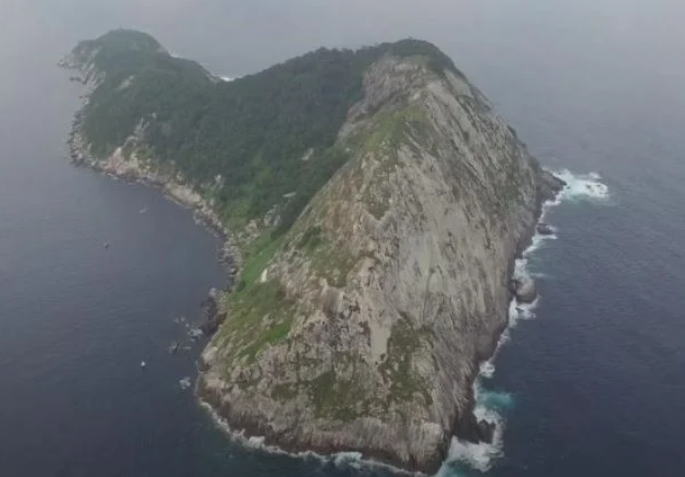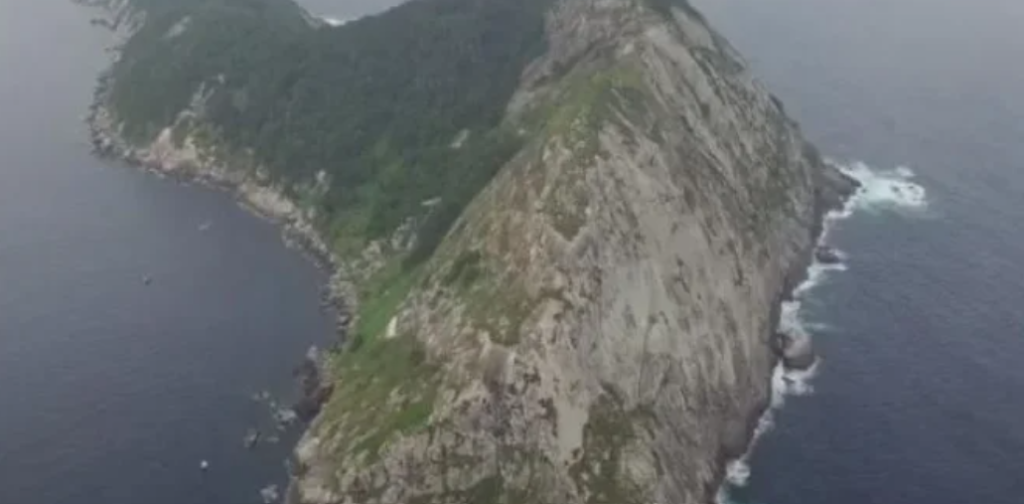The Snake Isle isn’t a figment of nightmares or horror movies; it’s an authentic location. Locally known as “Ilha de Queimada Grande”, this place, located around 30 kilometers off the Brazilian São Paulo coast, has earned its ominous nickname.
From a distant view, the island seems picturesque, surrounded by lush greenery, a stunning rocky coastline, abundant sunshine, and crystal-clear waters. However, the idyllic imagery vanishes when you realize this isn’t a surfer’s paradise but a haven for the world’s deadliest snakes, numbering in the thousands.

Scientists attest that no place on Earth harbors a higher concentration of venomous snakes. Given the island’s mere 0.45 square kilometers, encountering a snake per meter of land is an inevitability.
Human habitation is absent, save for a lighthouse constructed to prevent shipwrecks. The sole historical trace of human presence rests on the shoulders of a lighthouse keeper, according to legend. Unfortunately, the keeper and his family supposedly fell victim to snake invasions through open windows.
Stories of tragedy also recount a fisherman stranded on the island’s shores. Attempting to pick bananas, he was ambushed by snakes from the trees. Fleeing to the shore, he endured multiple bites, the consequences of which were fatal.
Pit vipers from the lancehead family adapted to the island after ocean depths rose, isolating it. The snakes multiplied without natural predators, establishing their dominance. Mainly preying on birds, the golden lancehead snake’s venom dissolves human flesh, surpassing its mainland counterparts in potency.
The island’s unique snake population, locally known as “Ilha de Queimada Grande”, is largely unfamiliar. The island’s isolated nature keeps it shrouded in obscurity. The snake’s striking golden color and spear-shaped head contribute to about 90% of fatal snakebites in Brazil.
Even with antivenom, mortality hovers around 3%, with symptoms including kidney failure, brain bleeding, intestinal hemorrhaging, and muscle tissue necrosis. But these are the mainland’s golden snakes; imagine the peril posed by their island counterparts, five times more potent.
Consider the scenario of a black mamba bite, renowned for shutting down the nervous system, causing paralysis and 100% fatality. Such dire outcomes are inevitable unless the victim is within one meter of antivenom.
The island’s venomous snake population prompted a Brazilian government ban on visits, except for authorized scientists equipped with protective gear and an on-call doctor. Despite the prohibition, a black market thrives, offering tours and golden snake acquisitions for prices ranging from $10,000 to $30,000.
Beyond the island’s danger, the golden snake’s venom shows pharmaceutical potential, already contributing to medications for blood pressure. It’s believed this venom could combat blood clots, heart disease, and circulatory issues.
Legend suggests pirates introduced the golden snake to protect their hidden gold, a tale dismissed by historians as myth. The golden snake’s evolution likely traces back to the island’s isolation when rising sea levels cut it off from the mainland.
